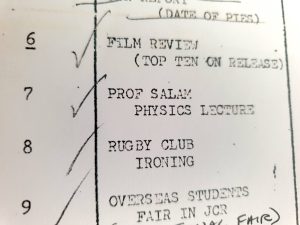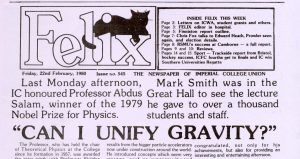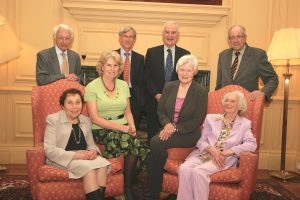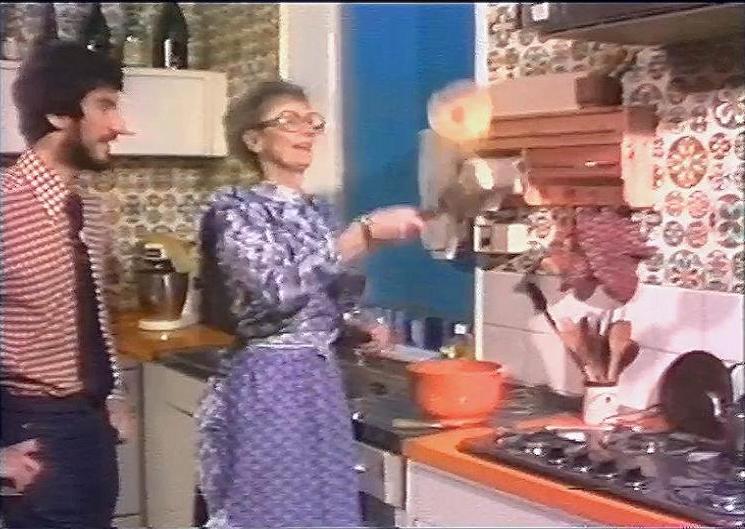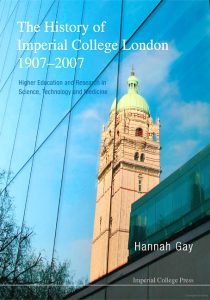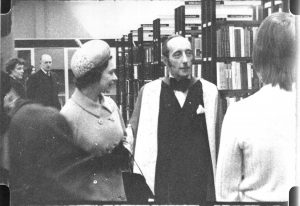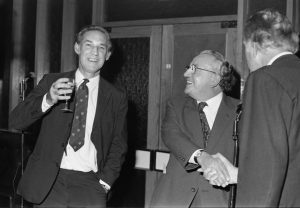STOIC had covered many Pancake Races in the Beit Quad, but in February 1980 something very different happened as we’ll see soon.
Coverage of the Pancake Race is listed as early as 1976 in the videotape index. That however was because it was being indexed with item maintained on videotape. However in the earlier days programmes were recorded, shown and then re-recorded over the next time around. As seen in previous blogs there is a limited archive of surviving materials on film. Started back in 1970, 8mm movie film was used to capture some events taking place outside of the TV Studio. There is just the one instance of a Pancake Race on film and thanks to the diary of Tim Dye a former STOIC Chairman I’m able to date this to 6 March 1973. I have digitised this and it’s available to see below.
But before we see that film from 1973 we should really see something rather different. The wife of the Rector, Lady Flowers making pancakes for Grant Richmond from STOIC. This all took place in the kitchen of the Rector’s flat at 170 Queens Gate and the only video recorded in there. It was seen on 20 February 1980.
Colin Grimshaw March 2022
